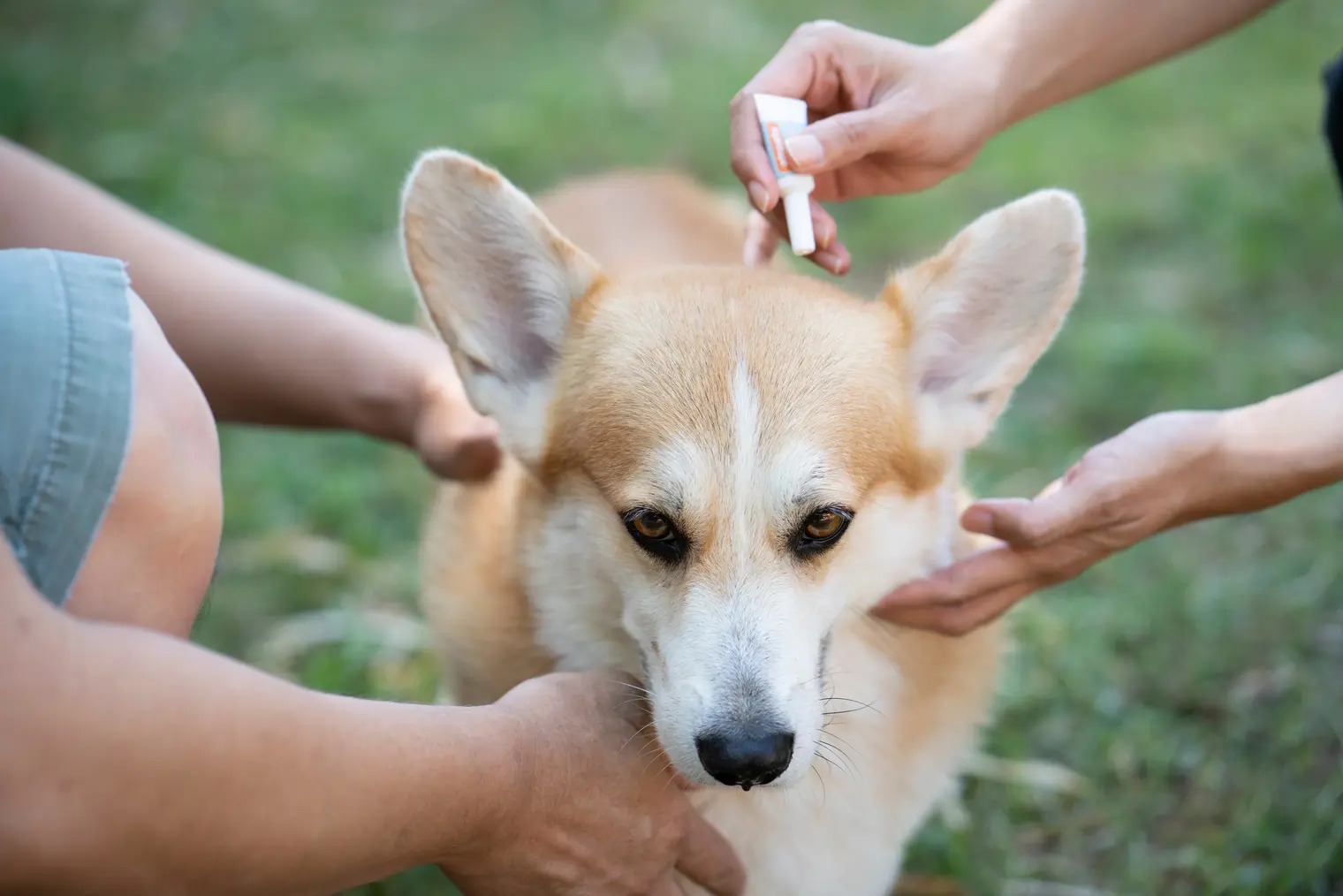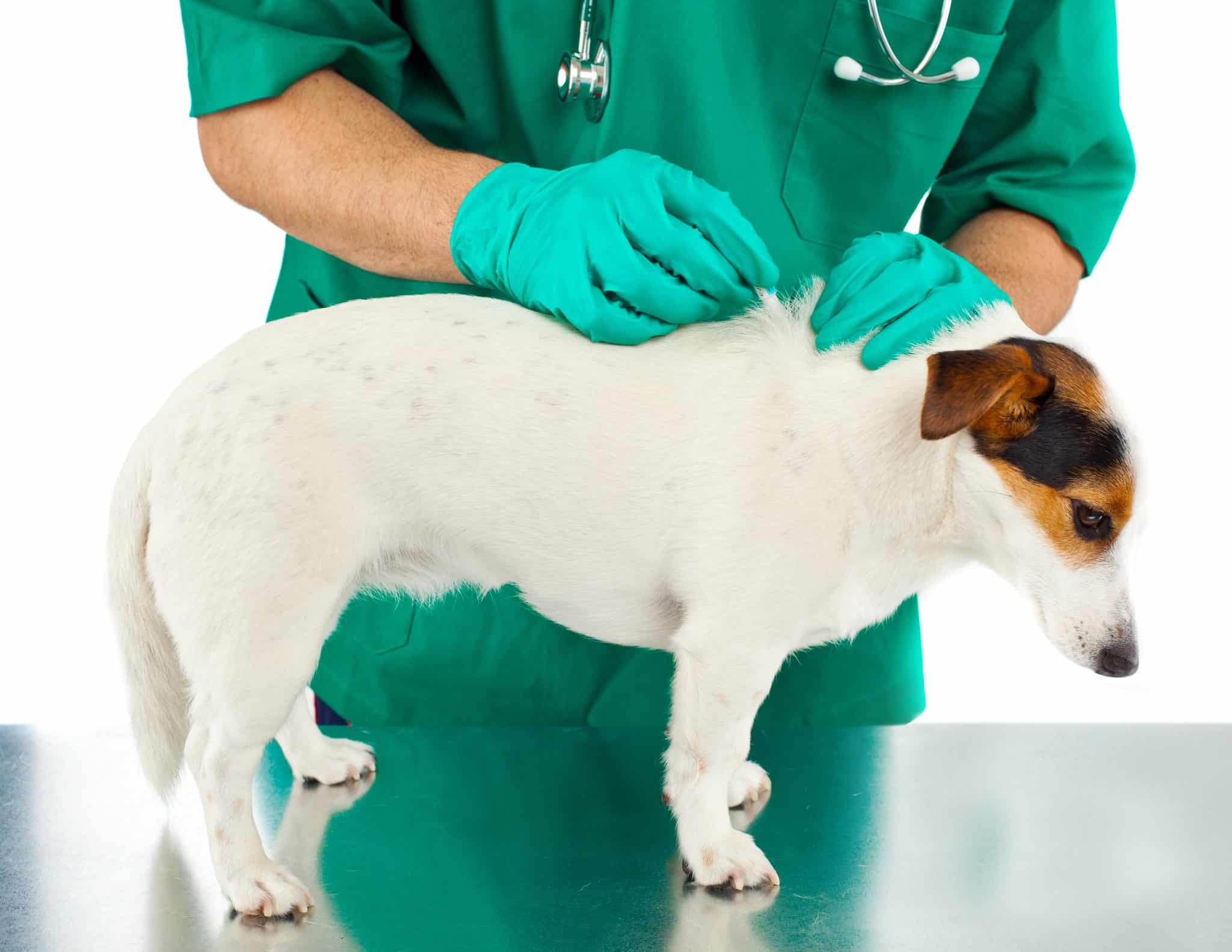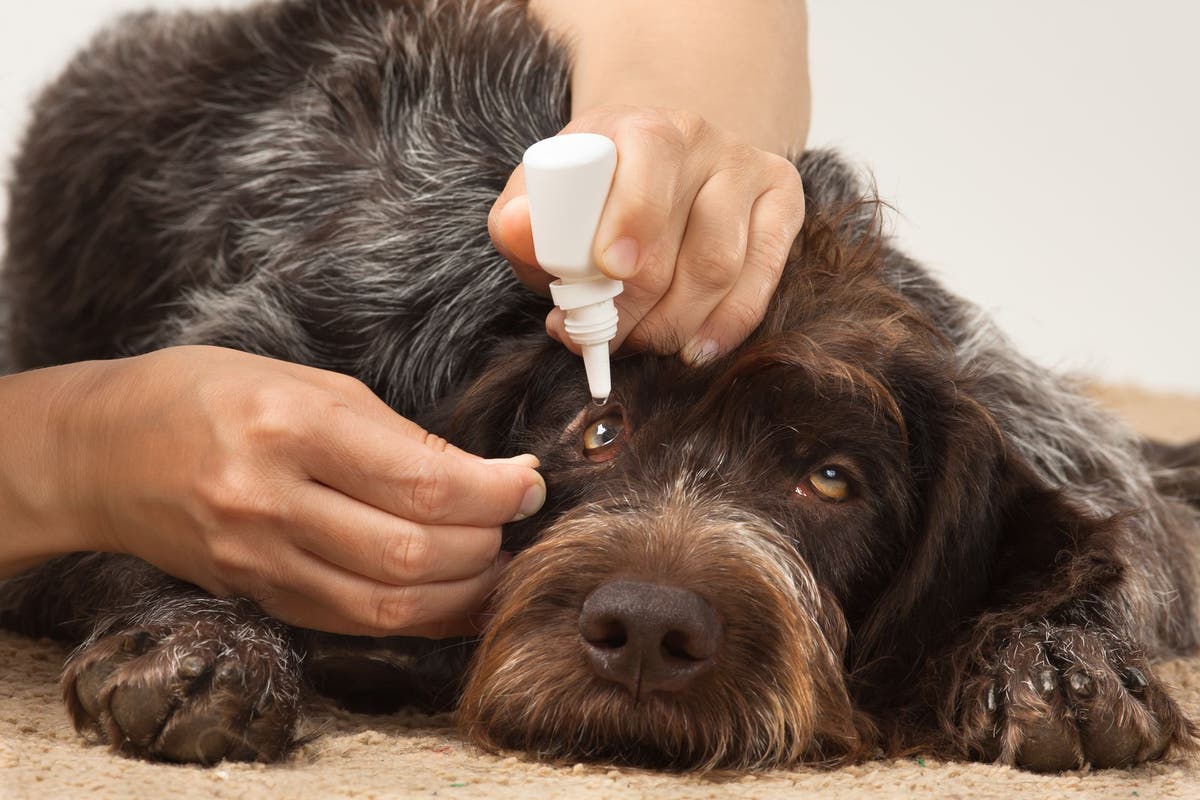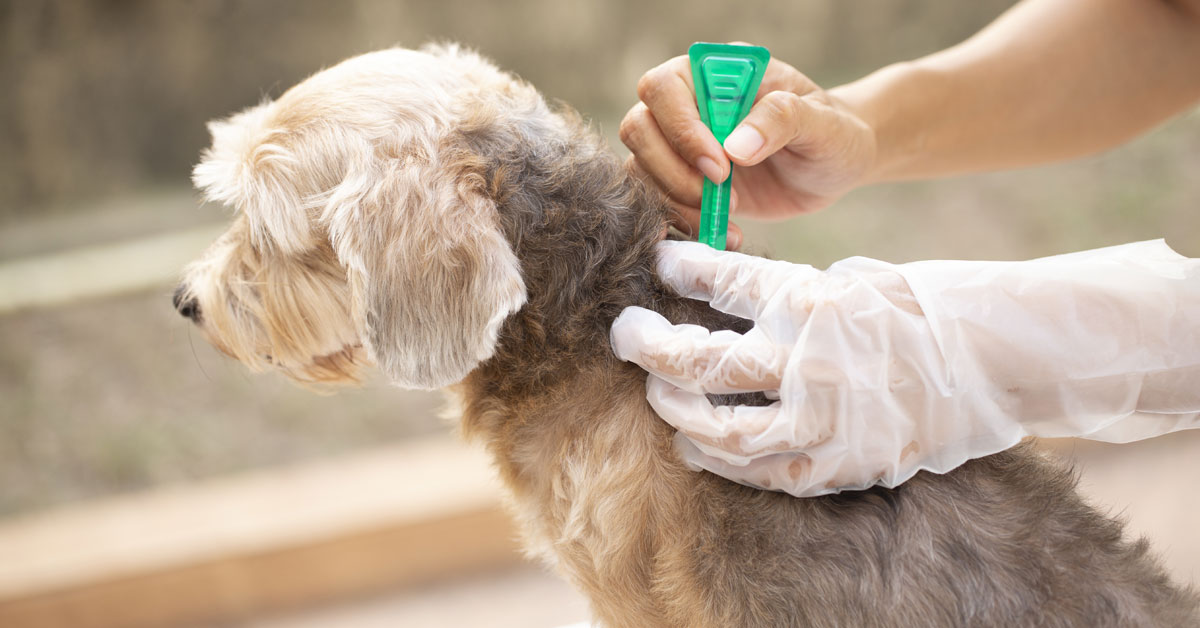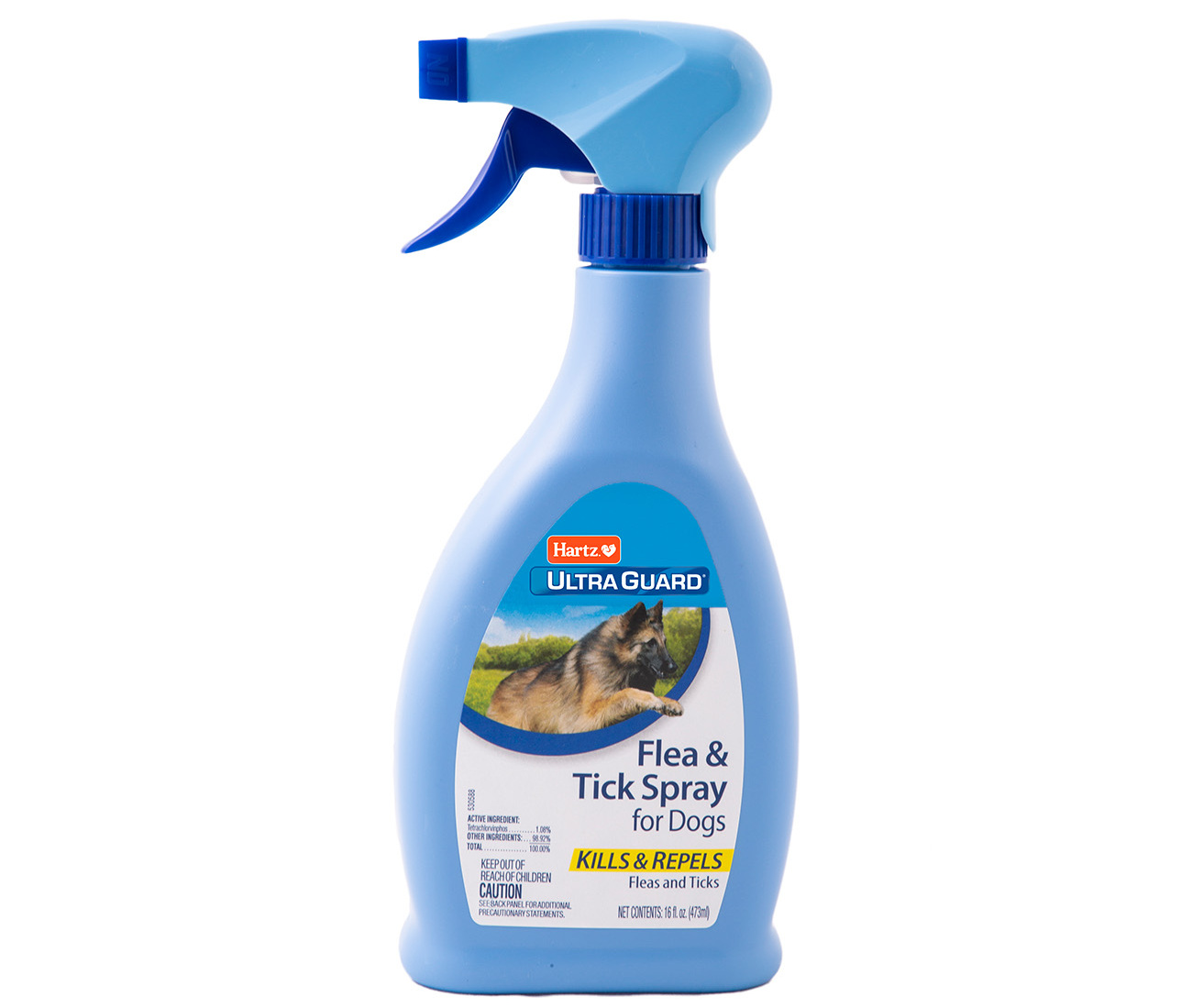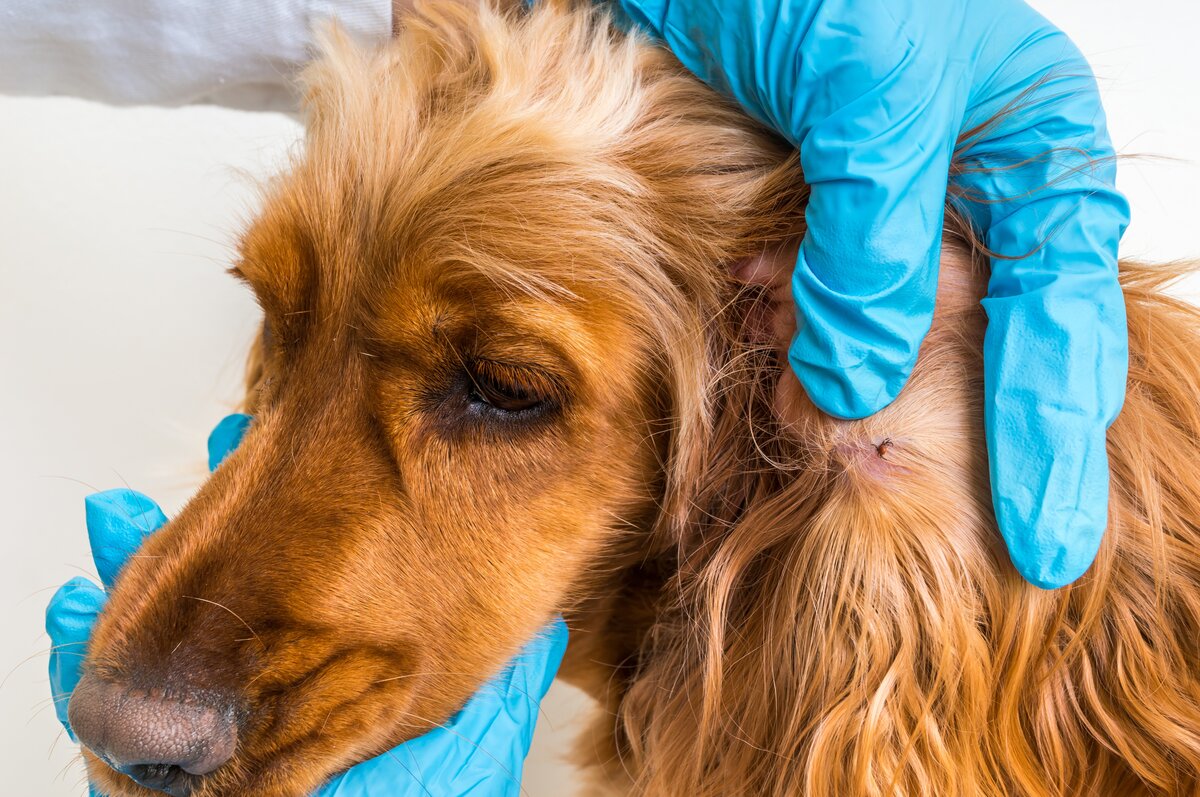Home>Health & Wellness>Common Health Issues>How To Apply Flea And Tick Medicine On Dogs
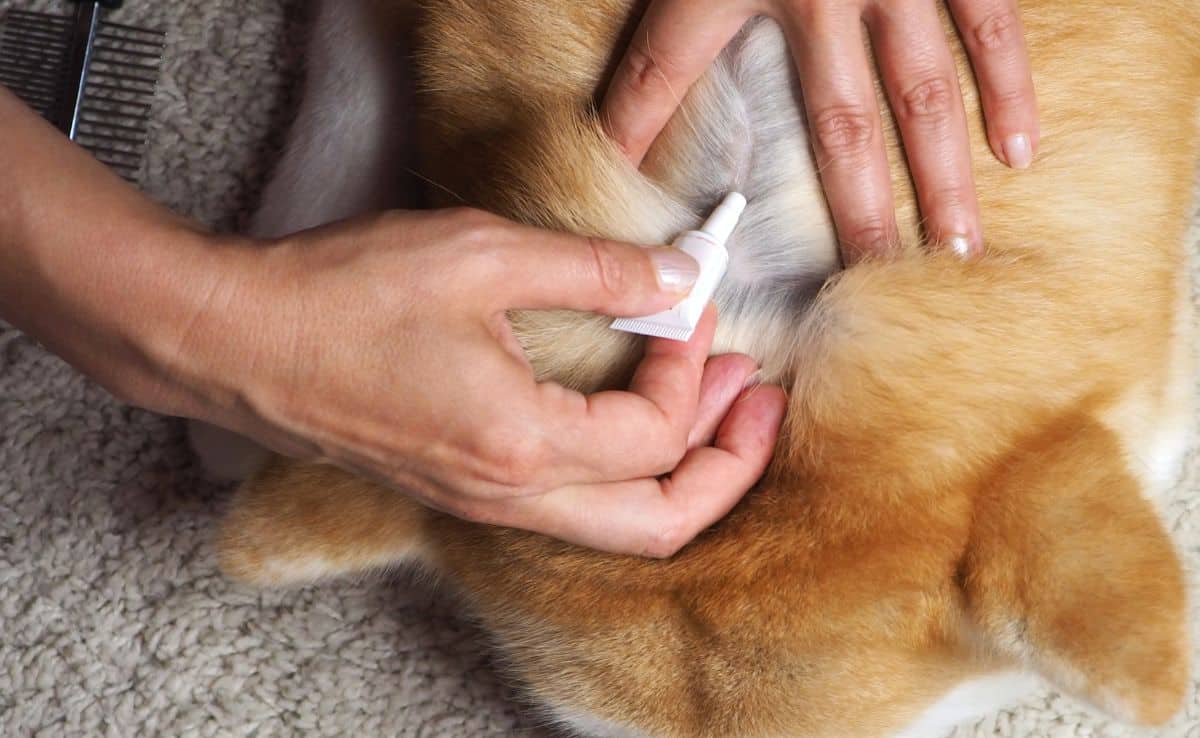

Common Health Issues
How To Apply Flea And Tick Medicine On Dogs
Modified: February 21, 2024
Learn how to apply flea and tick medicine on dogs to prevent common health issues. Follow these simple steps for effective treatment and protection.
(Many of the links in this article redirect to a specific reviewed product. Your purchase of these products through affiliate links helps to generate commission for Pawsomeoldies.com, at no extra cost. Learn more)
Table of Contents
Introduction
Fleas and ticks are common parasites that can cause discomfort and health issues for dogs. These tiny pests can infest your furry friend, leading to itching, skin irritation, and in severe cases, transmitting diseases. As a responsible pet owner, it's crucial to protect your dog from these nuisances by applying flea and tick medicine regularly.
In this comprehensive guide, we will delve into the essential aspects of applying flea and tick medicine on dogs. From understanding the behavior of these parasites to selecting the right preventive products and administering them effectively, we will cover everything you need to know to safeguard your canine companion's well-being.
By gaining a deeper understanding of the nature of fleas and ticks and learning the best practices for applying preventive treatments, you can ensure that your dog remains healthy, happy, and free from the discomfort caused by these pesky parasites. Let's embark on this informative journey to equip you with the knowledge and skills to protect your beloved pet from the perils of flea and tick infestations.
Understanding Fleas and Ticks
Fleas and ticks are small but mighty parasites that pose a significant threat to the well-being of dogs. Understanding the behavior and characteristics of these pests is crucial in effectively combating their presence and preventing infestations.
Fleas
Fleas are wingless insects that survive by feeding on the blood of mammals and birds. These tiny, agile creatures possess specialized mouthparts that allow them to pierce the skin of their host and consume blood. The saliva of fleas contains allergens that can trigger allergic reactions in dogs, leading to intense itching, skin irritation, and discomfort. In severe cases, flea infestations can result in anemia, especially in young or small dogs.
Fleas reproduce rapidly, with a single female flea capable of laying hundreds of eggs within a short period. These eggs can scatter throughout the environment, including your home and outdoor spaces, creating a persistent cycle of infestation. Understanding the life cycle of fleas is essential for effective control and prevention.
Ticks
Ticks are arachnids that belong to the same family as spiders and scorpions. These external parasites attach themselves to the skin of animals, including dogs, and feed on their blood. Ticks are known vectors for various diseases, including Lyme disease and Rocky Mountain spotted fever, making them a significant health concern for both dogs and humans.
Ticks undergo several life stages, including egg, larva, nymph, and adult. During each stage, they require a blood meal to progress to the next phase of their life cycle. Ticks are commonly found in grassy and wooded areas, where they wait for potential hosts to pass by, using their specialized sensory organs to detect heat, carbon dioxide, and movement.
Prevention and Control
Understanding the biology and behavior of fleas and ticks is essential for implementing effective prevention and control measures. Regular grooming, maintaining a clean living environment, and using vet-recommended preventive products are crucial steps in safeguarding dogs from these parasites. By staying informed about the habits and characteristics of fleas and ticks, pet owners can take proactive measures to protect their canine companions from infestations and the associated health risks.
Choosing the Right Flea and Tick Medicine
Selecting the appropriate flea and tick medicine is a critical step in safeguarding your dog from parasitic infestations. With a myriad of preventive products available in the market, it's essential to make an informed decision based on your dog's specific needs and lifestyle. Here are essential factors to consider when choosing the right flea and tick medicine for your canine companion:
1. Dog's Health and Age
Consider your dog's current health status and age when selecting a preventive treatment. Puppies, senior dogs, and those with pre-existing health conditions may require gentle formulations that are suitable for their age and health status. Consult with your veterinarian to determine the most appropriate preventive products for your dog based on their individual health needs.
2. Mode of Administration
Flea and tick medicines are available in various forms, including topical treatments, collars, sprays, and oral medications. Consider your dog's temperament and lifestyle when choosing the mode of administration. For instance, if your dog dislikes topical applications, an oral preventive medication might be a more suitable option. Additionally, some products offer long-lasting protection, while others require more frequent application, so consider your preferences and convenience.
3. Efficacy and Spectrum of Activity
Look for preventive products that not only target fleas and ticks but also provide protection against other parasites, such as mosquitoes and lice. Understanding the spectrum of activity of the chosen product is crucial in ensuring comprehensive protection for your dog. Additionally, consider the efficacy of the product in killing and repelling parasites to prevent infestations effectively.
4. Safety and Side Effects
Prioritize the safety of the preventive treatment for your dog. Research the potential side effects and interactions associated with the chosen product, especially if your dog is on other medications. Opt for products that have been extensively tested for safety and are recommended by veterinarians to minimize the risk of adverse reactions.
5. Environmental Impact
Some flea and tick medicines may have environmental implications, especially if they are washed off into water bodies or pose risks to non-target organisms. Consider eco-friendly options that are designed to minimize environmental impact while effectively protecting your dog from parasites.
By carefully considering these factors and consulting with your veterinarian, you can make an informed decision when choosing the right flea and tick medicine for your dog. Prioritizing your dog's well-being and safety, while ensuring effective protection against fleas and ticks, is essential in promoting a healthy and happy life for your beloved canine companion.
Preparing Your Dog for Application
Before applying flea and tick medicine on your dog, it's essential to prepare both your pet and the environment to ensure a smooth and effective application process. By taking the necessary steps to prepare your dog, you can minimize stress and discomfort, making the experience more pleasant for both you and your furry friend.
1. Grooming:
Begin by grooming your dog to remove any existing fleas and ticks. Use a fine-toothed comb to carefully comb through your dog's fur, paying close attention to areas where parasites are commonly found, such as around the ears, neck, and tail. Grooming not only helps in removing visible parasites but also allows you to inspect your dog's skin for any signs of infestation or irritation.
Read more: When Should Dogs Take Flea And Tick Medicine
2. Bathing:
If your dog is due for a bath, consider giving them a gentle wash with a mild dog shampoo before applying the preventive treatment. A clean coat can enhance the efficacy of topical flea and tick medicines by ensuring that the product comes into direct contact with the skin. However, it's important to follow the specific guidelines provided by the manufacturer regarding bathing before or after application.
3. Environment:
Prepare a comfortable and well-lit area for the application process. Choose a spot where your dog feels relaxed and secure, such as their favorite resting area or a quiet corner of the room. Clear any clutter and ensure that you have all the necessary supplies within reach, including the flea and tick medicine, applicator, and treats to reward your dog for their cooperation.
4. Calm and Soothe:
Create a calm and soothing atmosphere to help your dog feel at ease during the application. Speak to them in a reassuring tone, offer gentle petting, and use positive reinforcement to alleviate any anxiety. By maintaining a relaxed demeanor and providing comfort, you can help your dog remain cooperative throughout the process.
5. Follow Instructions:
Carefully read and follow the instructions provided by the manufacturer of the flea and tick medicine. Pay attention to the recommended dosage, application technique, and any specific precautions or guidelines. Adhering to the instructions ensures that the preventive treatment is administered correctly, maximizing its effectiveness and safety for your dog.
By preparing your dog for the application of flea and tick medicine, you can create a conducive environment for a successful and stress-free experience. Taking the time to groom, bathe if necessary, set up a comfortable space, and provide reassurance to your dog contributes to a positive application process, ultimately contributing to the well-being and protection of your beloved pet.
Applying Topical Flea and Tick Medicine
Applying topical flea and tick medicine is a crucial step in protecting your dog from parasitic infestations. Topical treatments typically come in the form of spot-on solutions or sprays that are directly applied to the skin of your dog. These products are designed to kill existing fleas and ticks, repel new infestations, and provide lasting protection against these parasites. Here's a detailed guide on how to effectively apply topical flea and tick medicine on your dog:
-
Select the Right Product: Begin by choosing a high-quality topical flea and tick medicine that is specifically formulated for dogs. Ensure that the product is suitable for your dog's age, weight, and health status. Read the label carefully to understand the application guidelines and any specific precautions.
-
Identify the Application Site: Part your dog's fur to expose the skin between the shoulder blades or at the base of the neck, which is a common application site for topical treatments. This area is difficult for dogs to reach with their mouths, reducing the likelihood of them ingesting the medicine during grooming.
-
Prepare the Applicator: If the topical treatment comes with an applicator, carefully open the packaging and remove the applicator. Some products may require you to snap off the tip of the applicator before use. Ensure that you have the correct dosage for your dog's weight, as indicated on the packaging.
-
Administer the Medicine: Gently squeeze the applicator to apply the topical solution directly onto the skin in the designated area. Avoid applying the product to the fur, as it may reduce its effectiveness. If using a spray, hold the bottle a few inches away from the skin and spray evenly over the targeted area.
-
Prevent Licking or Grooming: After applying the medicine, prevent your dog from licking or grooming the treated area for the specified duration. This allows the product to be absorbed into the skin and distributed effectively to provide protection against fleas and ticks.
-
Observe and Monitor: Keep an eye on your dog to ensure that they do not exhibit any adverse reactions to the topical treatment. Monitor the application site for any signs of irritation or discomfort. If you notice any unusual reactions, consult your veterinarian immediately.
-
Follow-Up and Reapplication: Adhere to the recommended reapplication schedule provided by the manufacturer. Some topical treatments offer long-lasting protection for up to a month, while others may require more frequent reapplication. Consistency in reapplication is essential for continuous protection.
By following these steps and guidelines, you can effectively apply topical flea and tick medicine on your dog, providing them with comprehensive protection against these pesky parasites. Prioritize your dog's safety and well-being throughout the application process, and consult your veterinarian if you have any concerns or questions regarding the use of topical flea and tick treatments.
Administering Oral Flea and Tick Medicine
Administering oral flea and tick medicine is an effective method of protecting your dog from parasitic infestations. Oral medications are available in various forms, including chewable tablets and flavored pills, making it convenient to administer to dogs of all sizes. Here's a detailed guide on how to effectively administer oral flea and tick medicine to your canine companion:
-
Select the Appropriate Product: Begin by selecting an oral flea and tick medicine that is specifically formulated for dogs. Consider your dog's weight and age when choosing the right dosage strength. It's essential to follow the manufacturer's guidelines and consult with your veterinarian to ensure that the selected product is suitable for your dog.
-
Prepare the Medication: If the oral medication comes in the form of a chewable tablet or pill, ensure that it is easily palatable for your dog. Some oral flea and tick medicines are flavored to appeal to dogs, making the administration process smoother. Familiarize yourself with the recommended dosage based on your dog's weight to ensure accurate administration.
-
Administer the Medicine: Gently offer the chewable tablet or pill to your dog, either by placing it directly into their mouth or mixing it with a small amount of food. Encourage your dog to consume the medication by offering positive reinforcement, such as praise or a small treat. Ensure that the entire dose is ingested to guarantee the effectiveness of the treatment.
-
Monitor and Ensure Ingestion: After administering the oral flea and tick medicine, observe your dog to ensure that they have consumed the entire dose. If the medication was mixed with food, confirm that your dog has eaten the entire portion containing the medication. This step is crucial in ensuring that your dog receives the full protective benefits of the oral treatment.
-
Follow-Up and Reapplication: Adhere to the recommended reapplication schedule provided by the manufacturer and your veterinarian. Some oral flea and tick medications offer extended protection, while others may require more frequent administration. Consistency in reapplication is vital for continuous protection against fleas and ticks.
By following these steps and guidelines, you can effectively administer oral flea and tick medicine to your dog, providing them with comprehensive protection against these pesky parasites. Prioritize your dog's safety and well-being throughout the administration process, and consult your veterinarian if you have any concerns or questions regarding the use of oral flea and tick treatments.
Monitoring and Follow-Up
After applying flea and tick medicine to your dog, diligent monitoring and follow-up play a crucial role in ensuring the effectiveness of the treatment and the ongoing well-being of your canine companion. Here's a detailed overview of the essential steps involved in monitoring and follow-up:
-
Observation: Following the application of flea and tick medicine, observe your dog for any immediate reactions or behavioral changes. Monitor the application site for any signs of irritation, redness, or discomfort. Additionally, keep an eye out for excessive scratching or grooming behavior, as these may indicate the presence of residual parasites or a reaction to the treatment.
-
Post-Application Period: During the initial period after applying the preventive treatment, pay close attention to your dog's overall behavior and well-being. Note any changes in appetite, energy levels, or skin condition. While mild lethargy or localized sensitivity at the application site may be normal, persistent or severe symptoms should prompt a consultation with your veterinarian.
-
Parasite Activity: Continuously monitor your dog for any signs of flea or tick activity. Regularly check their fur and skin for the presence of live parasites or signs of infestation, such as flea dirt or tick attachment. If you notice any parasites, consult your veterinarian to determine the appropriate course of action, which may include reapplication of the preventive treatment or additional measures to address the infestation.
-
Reapplication Schedule: Adhere to the recommended reapplication schedule provided by the manufacturer of the flea and tick medicine. Whether you have applied a topical treatment or administered an oral medication, consistency in reapplication is essential for maintaining continuous protection against parasites. Set reminders to ensure that you administer the subsequent doses according to the specified timeline.
-
Veterinary Consultation: If you have any concerns or questions regarding the effectiveness of the flea and tick medicine or your dog's response to the treatment, seek guidance from your veterinarian. They can provide valuable insights, conduct a thorough assessment of your dog's health, and recommend any necessary adjustments to the preventive regimen.
-
Environmental Management: In addition to monitoring your dog, take proactive measures to manage the living environment to minimize the risk of flea and tick infestations. Regularly clean and vacuum your home, wash your dog's bedding, and consider using environmental control products recommended by your veterinarian to address any residual parasites in the surroundings.
By diligently monitoring your dog and adhering to the recommended follow-up measures, you can ensure that they receive comprehensive protection against fleas and ticks. Consistency, observation, and proactive management contribute to the overall effectiveness of the preventive treatment, promoting the health and well-being of your beloved canine companion.




